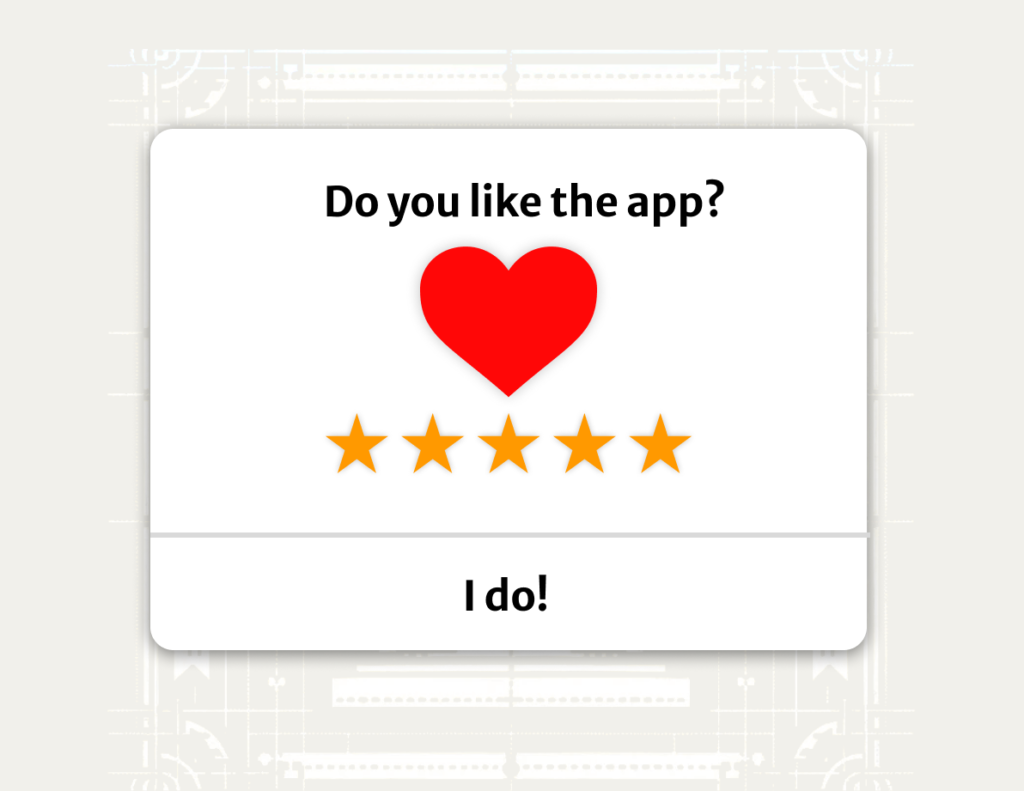Would you install an app with a low rating? Probably not. Good app reviews are the difference between being seen and being overlooked, between success and obscurity. But here’s the catch: getting those coveted five-stars isn’t just about building a great app; it’s about understanding the psychology behind user feedback and leveraging it to your advantage. In this article, we’ll dive into the strategies that will help you high app ratings on App Store and Google play, and turn your users into loyal advocates.
What’s a good rating?
A rating of 4.0 is considered OK, reflecting a generally positive experience but with room for improvement.
A score of 4.5 signifies a very good app, highly valued by users and meeting their expectations well.
Achieving 4.8 or higher is outstanding, indicating exceptional quality, functionality, and user satisfaction.
App ratings should always be evaluated in the context of the industry and competitors. If the average rating in a category is 3.5, an app with a 4.0 rating can already be considered a success.
Is the problem your app or is the problem the Negativity Bias?
Have you ever noticed that people are more likely to post a negative review than a positive one? This psychological phenomenon is called the Negativity Bias. People react more strongly to negative experiences. On the other hand, positive experiences often go unnoticed, as users perceive them as the baseline or “what’s expected.”
This bias can lead to a situation where negative opinions are overrepresented compared to the actual distribution of user experiences.
What to do when you feel your app reviews are too harsh?
There’s a well-known negotiation rule that applies perfectly here: “If you don’t ask for something you want, the answer is always ‘no.'” Similarly, if you don’t ask your happy users for reviews, they won’t leave them, and you’ll be left only with feedback from dissatisfied users.
It’s time to flip the script.
How to gain a more balanced view of your app? Here are a few ideas.
Strategies for achieving high app ratings
1. Use internal surveys
Conduct an internal survey within your app that is visible only to you. If users give you high app ratings in the survey, you can encourage them to leave one in the actual app stores. This will be visible to everyone and provide further social proof of why your app is worth using.
However, if the internal survey rating is below 4 stars, ask users to specify areas for improvement. This way, they’ll feel their opinion matters and their concerns are heard while giving you time to address potential issues.
2. Let users know you care… just like Youtube influencers.
Why do YouTubers ask for likes early on? It’s simple: most viewers don’t watch videos all the way through, so asking for a like at the beginning increases the chances of getting one. Similarly, when you ask for feedback early in your app, you’re not just collecting data; you’re demonstrating that user input matters from the start. You never know how long users will stick with your app—if they use it briefly, they may not bother leaving a review later. Early engagement ensures you don’t miss valuable feedback.
3. Timing matters when asking to rate the app
Asking for reviews at the wrong time can backfire and lead to negative feedback. Be strategic about it. Asking users for reviews early is important, but so is their mood. Prompt them to leave a review when they’re happy—such as after completing a level or making a smooth purchase. High app ratings are unlikely to be obtained after it crashes or when users are experiencing issues with it. That’s like asking someone to rate their dining experience while they’re still fuming about the bad service.
4. Improve User Experience (UX)
Poor UX can ruin your app’s reputation really quickly. If users struggle with navigation or encounter bugs, they’ll uninstall it and post negative reviews. An often mistake is trying to cut costs at the initial stages of designing an app and instead of investing in professional UX/UI services, many app creators rely on their intuition or layouts generated in chatGPT. Engaging a seasoned UX/UI designer will simply pay off.
Test your app on various devices, especially lower-end phones that may face difficulties running it properly. Use crash tracking tools to identify issues before users do, such as Firebase Crashlitics– a tool that we use and recommend at mobitouch.
5. Respondi to feedback
Respond to all reviews—thank satisfied users who took their time to post high app ratings and assist those who are unhappy. When you resolve an issue for a user and they see their concerns addressed, they often update their review from one star to five stars.
Responding to reviews isn’t just about customer service; it’s about connecting with users on a personal level. When you thank satisfied users and assist unhappy ones, you show that there are real people behind the app, who care about the product and the users.
6. Engage your loyal supporters
Your earliest supporters have been cheering you on from the start, invested in your journey, and understand the blood, sweat, and tears that went into creating your app. These loyal fans—whether they’re part of your Facebook group, app community, or wait-list members—will appreciate your efforts more deeply than newcomers. They know your journey, the struggles, and the triumphs. By asking them for feedback and reviews, you’re not just gathering opinions; you’re involving them in your success story.

Takeaway
Achieving high app ratings isn’t just about the numbers; it’s about building a relationship with your users. By understanding the psychology behind user feedback, using strategies like internal surveys, responding to feedback personally, and engaging your loyal supporters, you can transform your app’s reputation and turn users into loyal advocates. Remember, every review is a chance to show the world why your app is worth downloading. So, go ahead and ask your users if they like the app. The answer might just be “I do”.






